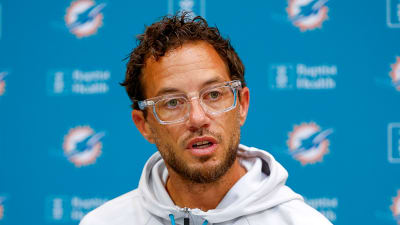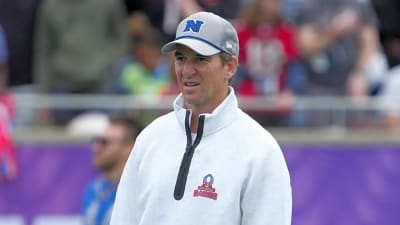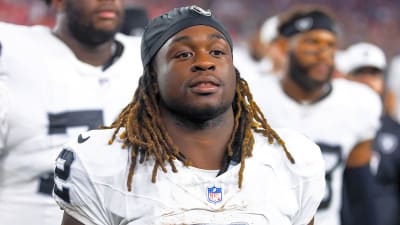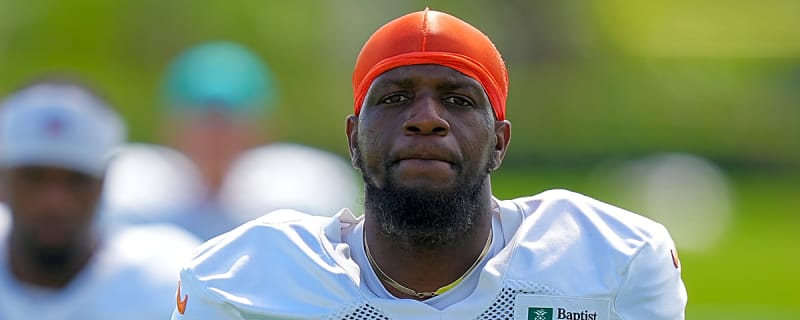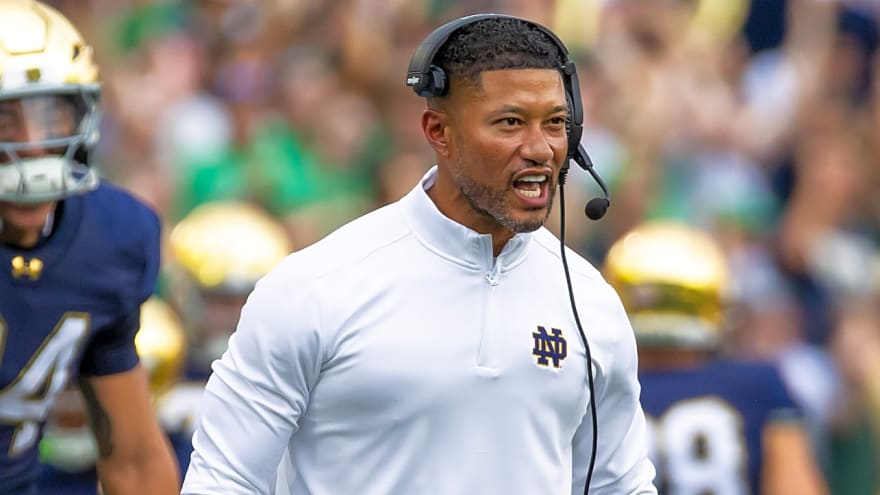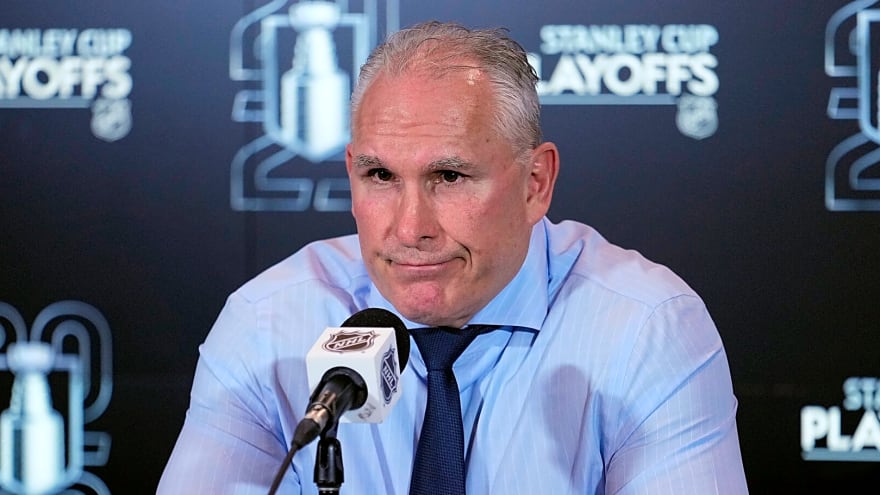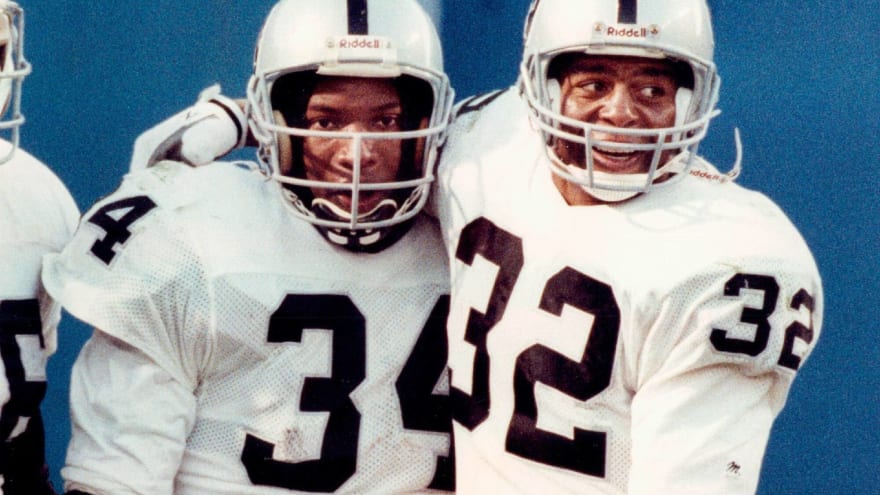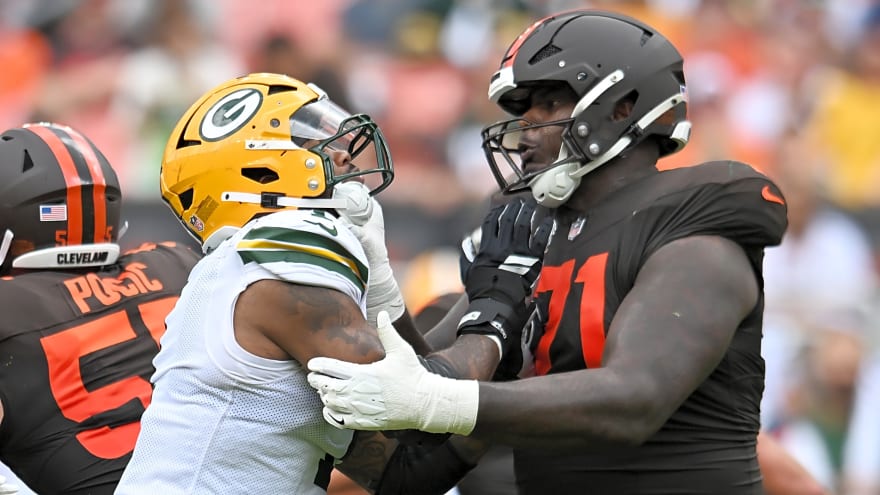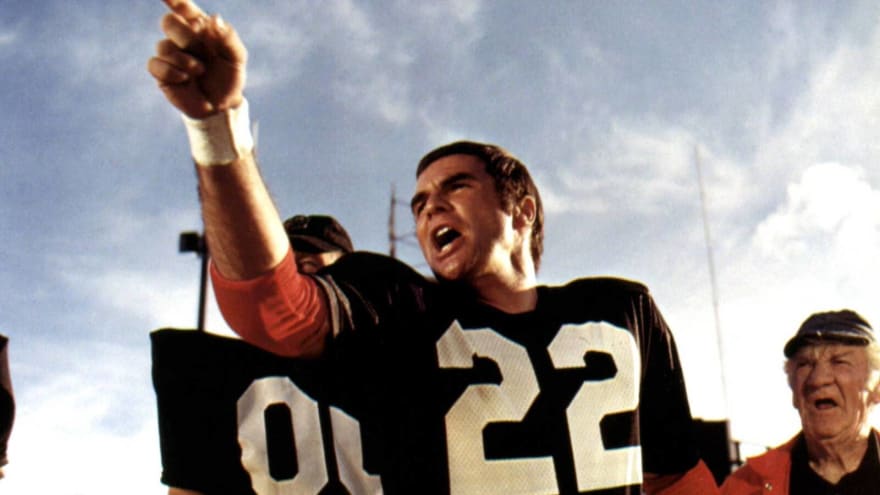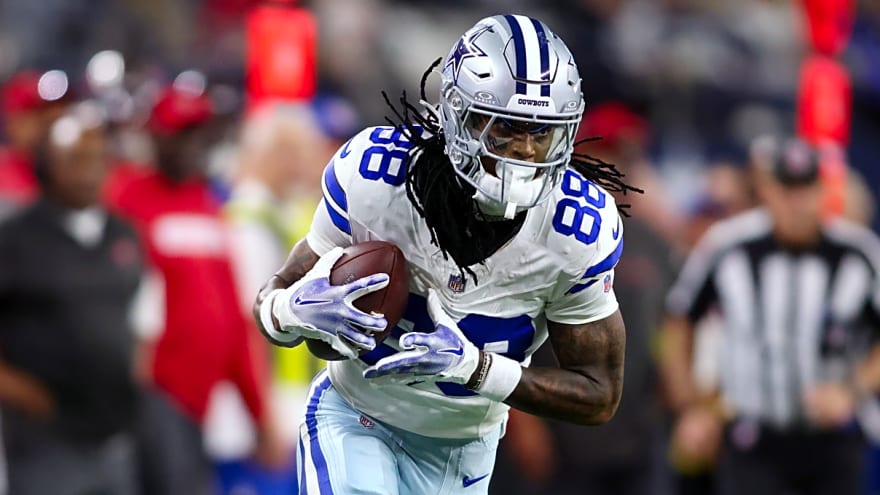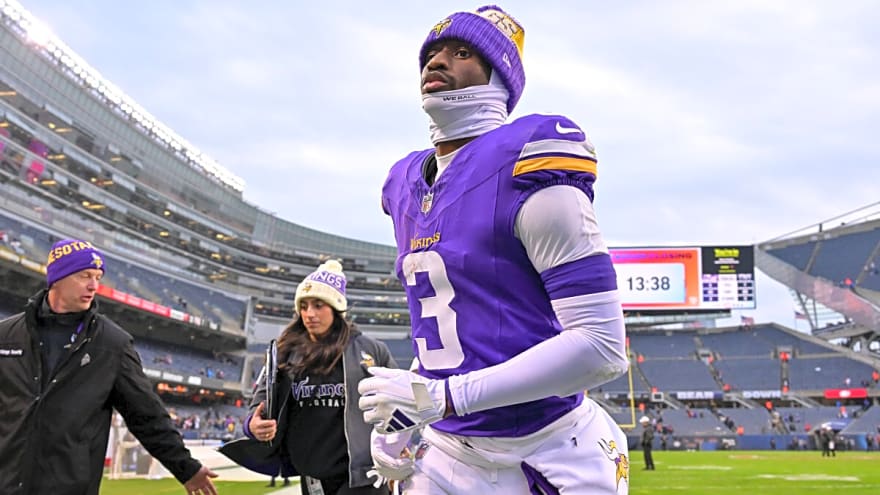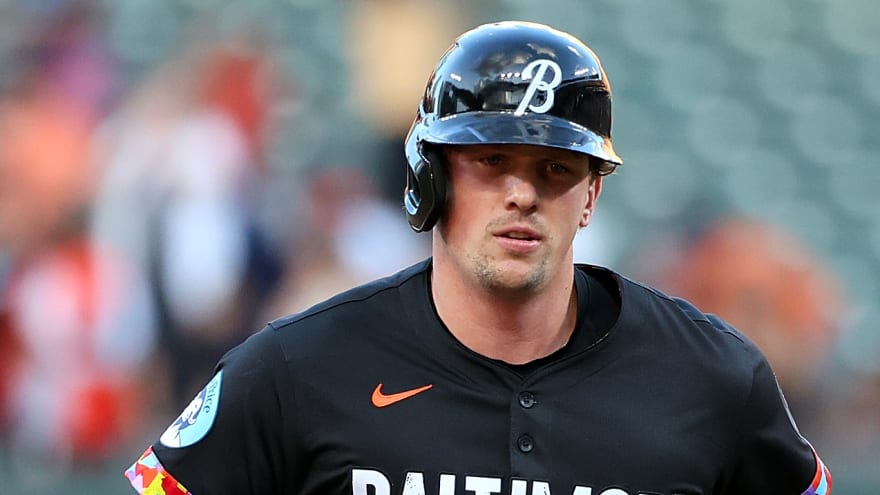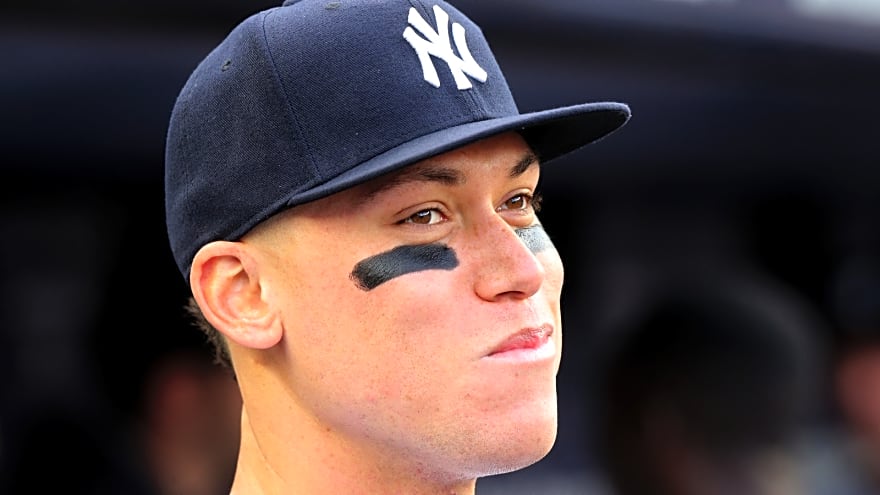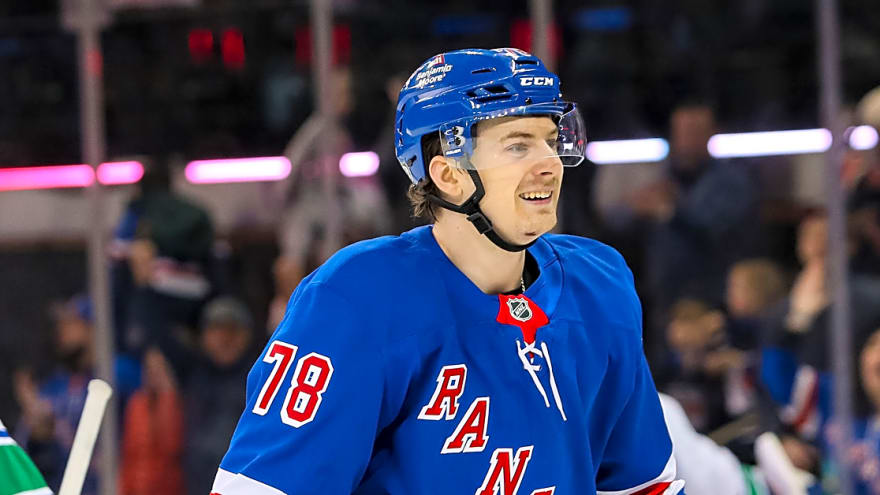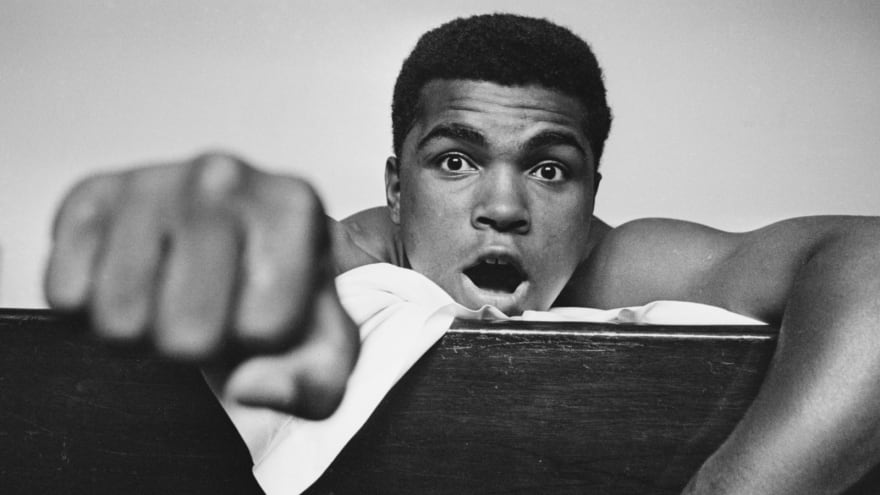AC Milan technical director Geoffrey Moncada has revealed some fascinating details about his arrival at the club and his rise to being an important player in the transfer market.
Speaking during an interview with the club’s official media (via Pianeta Milan), the man who could also be described as Milan’s sporting director opened up about his role and the future of the club.
He is a man that many fans know little about, largely due to the fact that he has no presence on social media beyond a LinkedIn account where he is listed as being a ‘video analyst’. You can read some more about his professional background in this piece.
He joined Milan at the beginning of the Elliott Management era back in 2018 and even back then it was regarded as a big scalp for the Rossoneri thanks to his impressive body of work. He was first asked about what his dreams in football were as a child.
“My first contact with football was with Monaco. I immediately understood that it was the job I wanted to do in the future. As a child it was my father who took me to the stadium to watch the matches. I started following and became crazy about football,” he said.
On the teams he followed most: “I like Latin and Italian football more. Milan had many Frenchmen in the team. But I also like Spanish football.”
On how he approached the world of football: “I had a grandfather who was crazy about football, he showed me lots of games. I started to understand tactics. I was born in Saint-Tropez but then I went to Monaco, to Nice, and these areas were important for football in France.”
His memories of Milan in those years: “Milan had many French players. I discovered Milan when they played against PSG and Monaco in the Champions League. I discovered San Siro and its fans, it was a very, very strong team.”
His playing career: “I was a player like Gattuso, very aggressive, with a lot of pressing and intensity despite not being very tall. I wasn’t bad but I wasn’t a super player. I didn’t have the right profile to play. I liked the world around football more than being a player.”
On the relationship with my parents: “I am very close to my parents. My father let me watch the games, he let me play football. My mother didn’t always agree with me but she always let me do what I wanted.”
The greatest teaching of his parents: “They always told me to do what I liked and above all to go as far as in the end. They told me to have my own experiences, to travel.”
The stages of his career: “I studied management, it was interesting but I was missing something on a sporting level. So after studying I found a football company, Video Profile. Their work concerned videos of the teams, players and above all scouting.”
The call from Monaco: “The Monaco sporting director called me and told me he had to have a meeting with me because the coach at the time, Claudio Ranieri, needed a match video analyst.”
The emotion of working with Monaco: “I didn’t believe it, but when the time is right you know where to go.”
His beginnings at Monaco: “The team was in Ligue 2, but the Russian fund changed everything. Mister Ranieri asked for me but there was nothing in the office, everything had to be created. For me it was interesting, having an immediate relationship with the coach, staff and locker room. That was important, because I saw and learned everything.”
Scouting work: “In the morning I worked with the coach, with the staff and with the players. In the afternoon I went scouting. It was difficult work, without rest, but very intense and interesting. The role of opponent analysis is very important. We had at least three appointments with the team to analyse the opposition.”
His travels: “During the week I was always in the office, to talk to the prosecutors. I went on the weekend and came back on Monday. But when you go on these trips you meet a lot of people including sporting directors and other scouts. The important thing is to know the player you are following, live work is very important.”
The relationship with the team: “The players saw that I arrived with humility. I was then lucky enough to have a good relationship with them.”
His best discoveries: “There are many, especially French. However, I say Ismael Bennacer, who is an example of how much we all have to work harder and harder to improve. We followed him some time ago then he went to Arsenal, he found little space and came here to Italy. He grew a lot at Milan.”
The call from Milan: “They called me in August to be the scout leader when the American fund, Elliott, arrived. For me the choice had already been made and I spoke with Monaco. Milan’s project was very interesting.”
On the differences between Monaco and Milan: “Everything is different, there is more pressure here. In Italy there is more passion, everyone talks about football. I immediately understood that I had to do well, find the right players. At Monaco it was easier to create a work process.”
Scouting at Milan: “We hold more meetings and once the video and analysis work is finished I speak directly with the staff and the coach. We did this for the summer market. We were looking for a particular profile, but then there was also the market. But the important thing is the relationship with the staff and the coach.”
On the modus operandi: “Today there is a lot of competition on the market, German, Spanish and Italian clubs who work well. We need to have a lot of important data, from statistics to injuries. When we have complete information I’ll go and see the player live. If you come to Milan it’s not just football, there are other important things too.”
What you look for in a player: “The data helps you find players you don’t know. But in person you see other things: physical and technical characteristics. Then I see what it speaks to me about, how it speaks to me. Let’s take a boy who enters a locker room of 25 players and we have to create a mix of cultures. The club is always more important than the player, Milan is more important. We want to create a group.”
On Rafael Leao: “I discovered him when I was at Monaco. In Lisbon there was a Sporting youth match. I saw a tall, fast and technically good boy who was Leao. We followed him, but he didn’t always do well. The most important thing for me are the player’s steps. Rafa did too well, he was on another planet. He’s playing well now and I’m happy he’s with us here in Milan.”
His presence at Milanello: “I speak in the morning with the staff and the coach. I know the players because we have been following them for two or three years. We talk about family and the game. I’m always open with them, to understand the things we can develop. Giorgio Furlani also helps me a lot and gives me a lot of space.”
Milan’s negative moments: “A season is very long, we have to be calm and work. There are always negative moments. For me it’s important to be balanced, we have a long season to play.”
On the future of Milan: “The idea is to create a strong group that can work over three to four years. If we make a good team we win. Now we have changed a lot, next year we will change two or three elements but now we have a base. We all want to win now, but we need a plan.”
More must-reads:
- Manchester City's sparkling fullbacks steal headlines in draw with Arsenal
- Can USMNT replicate AC Milan's success in unlocking Christian Pulisic?
- The 'Multiple 30-TD pass NFL seasons' quiz
Breaking News
Trending News
Customize Your Newsletter
 +
+
Get the latest news and rumors, customized to your favorite sports and teams. Emailed daily. Always free!
TODAY'S BEST

Lamine Yamal’s Father Sends Bold Message After Ousmane Dembele's Ballon d’Or Success
The 2025 Ballon d'Or ceremony ended with Ousmane Dembele officially winning the Ballon d'Or award. Lamine Yamal finished second in the ranking and was close to making history at 18 years old. The FC Barcelona teenager was seen as one of the favorites to win the award, and many rumors before the ceremony believed that Yamal would win it over Dembele. Yamal showed respect for Dembele on stage as the French forward was awarded the Ballon d'Or. After the ceremony, the cameras captured Lamine Yamal's father, Mounir Nasraoui, reacting to the result and left a bold message for things to come. Nasraoui sent greetings to the people of Spain and said that his son will win the Ballon d'Or award next year. Mounir Nasraoui: "Next year is ours." Lamine Yamal made history again Despite losing out on the Ballon d'Or award, Yamal continued to make history as he became the first player to win the Kopa trophy back-to-back. Yamal was once again nominated for the best young players in the world. Yamal won the award over Desire Doue, Joao Neves, Estevao, and Kenan Yildiz. Other players in the top 10 were Dean Huijsen, Pau Cubarsi, Rodrigo Mora, Ayyoub Bouaddi, and Myles Lewis-Skelly. FC Barcelona praised their teenage sensation for winning the award on their social media pages.

Steelers' Once Promising Third-Year Defender Could Be Relegated On The Depth Chart
The Pittsburgh Steelers have begun the 2025 NFL season with a 2-1 record, however there are some things that need to be figured out. The defense is shaky at best despite forcing five turnovers in Sunday's win over the New England Patriots in Week 3. The group still struggles to get off of the field on possession downs, and stopping the run has been an issue throughout the first three weeks of the season. A lot of that starts with the front seven and the interior defensive line. Pittsburgh has been banged up in that area, but some healthy contributors returning could shake up the lineup. Pittsburgh was able to see the regular season debut of Derrick Harmon on Sunday. The organization selected Harmon in the first round of the 2025 NFL Draft, but he suffered a sprained MCL in the preseason finale which kept him on the sidelines throughout the first two weeks of the regular season. He made an impact while serving in a limited role on Sunday against New England as he recorded a sack and two total tackles, and he is expected to help the run defense in the near future. Team insider Mark Kaboly spoke about the interior defensive line after the game on Sunday on the most recent episode of Kaboly + Mack, and he believes there will be two rookies starting in that area very soon. "They made some moves there, and it was able to help them out," Kaboly said. "That's a definite difference in what they were able to do. And I think it's just a matter of time until Yahya Black, Derrick Harmon and Cam Heyward's your one, two and three across the front. It's just a matter of time." Currently, Cam Heyward and Yahya Black are the starting defensive tackles for Pittsburgh while Keeanu Benton has been the starting nose tackle. That is the part of the lineup that will be shuffled, as Benton will likely switch to being a rotational piece, while Harmon enters the starting lineup. He will likely takeover the duties at defensive tackle, while Black shuffles to nose tackle. Benton was expected to take a leap forward going into his second season in 2024, but that didn't necessarily happen. He has made some big plays for Pittsburgh, but he has not been the consistent force that the organization had hoped he would be to this point. There was hope he would improve once again during the 2025 season, but if anything, the third-year pro has shown some regression since his rookie season. Moving to a rotational role where he can fill in at both defensive tackle and nose tackle might be best for Benton at this point. He doesn't necessarily have the size to be a true nose tackle in the NFL, so the coaching staff in Pittsburgh has seemingly been setting him up for failure a little bit in that regard. He would likely play better at defensive tackle, which is something the coaching staff could find out if the starting defensive line gets shuffled. Steelers Need To See Keeanu Benton Step Up No matter what role he is serving, Benton needs to play better moving forward. The interior defensive line is a key part of stopping the run, and Pittsburgh has struggled to do that. It is going to be hard to win meaningful games if that problem persists, especially against the better teams in the NFL that show up on the schedule later in the year. Benton needs to show some signs of progression, whether that be as a starter, or as someone who rotates in with the starting lineup throughout a game. Benton can still have a future in Pittsburgh, but he is going to need to improve in 2025 while setting himself up for success in 2026.
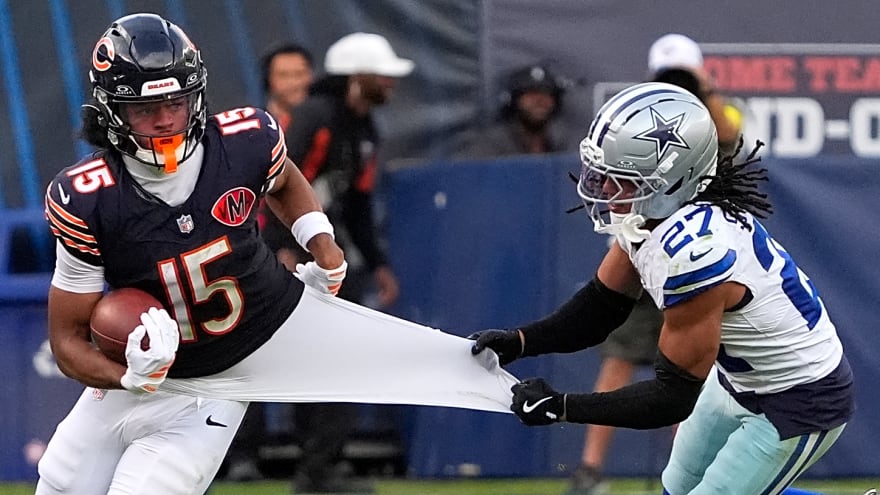
Former HC does not hold back on Cowboys' atrocious defense
The Dallas Cowboys have played about as poorly as they possibly can on defense through the first three weeks of the NFL season. One week after needing a pair of late field goals from kicker Brandon Aubrey to outlast the New York Giants, 40-37, in overtime, the Cowboys dropped their second game in three weeks on Sunday in a 31-14 loss to the Chicago Bears, showing no signs of improvement whatsoever. Rex Ryan blasts Cowboys defense Simply put, Dallas just looks lost on defense, leading to former head coach and current ESPN analyst Rex Ryan going off during Monday's edition of "Get Up." "Just when we thought it couldn't get worse, this defense comes up with even a worse performance," Ryan said. ... "You're so dumb. I can't stand it. Do something. I don't want to hear about you can't rush the passer. Then how about we send more players on the quarterback. We can't play zone coverage, then how about we play man coverage. You guys stink. Dumbsday defense." Dallas had no answers for the Bears and QB Caleb Williams on Sunday. After struggling to find a rhythm in the first two games, Williams was sensational, throwing for 298 yards and four TDs to pick up head coach Ben Johnson's first win in Chicago. As good as Williams was, though, the Cowboys defense certainly helped. Dallas (1-2) has given up 92 points through three games and is 28th in the league in opponent points per game (30.7 PPG), per TeamRankings. Something Ryan alluded to in his rant was Dallas' inability to stop Chicago on a 19-play, 76-yard drive in the third quarter that took 9:54 off the clock. It was a 24-14 game before then, and the Cowboys were picked off on each of their final three drives afterward to seal their fate. Quarterback Dak Prescott has been solid, accounting for 800 passing yards — fourth-most in the league — and three TDs. Before Sunday, he had only thrown one interception. The run game has also contributed four combined TDs between Javonte Williams and Miles Sanders, providing a much-needed balance. That has ultimately not mattered with the defense unable to get stops and limit drives from opposing teams. To make matters worse, star wideout CeeDee Lamb suffered a left ankle injury in the loss on Sunday, and it sounds like he could land on injured reserve, which would put him out of action for at least four games. That is the last thing Dallas needs right now. The team will likely be without its best player for an extended period of time, in addition to having an abysmal defense, which does not sound encouraging going forward for a franchise that always seems to be in the spotlight for all the wrong reasons.

Green Bay Packers, Micah Parsons see another Dallas Cowboys offensive starter ruled out for Week 4
The Green Bay Packers are coming off of a frustrating and humiliating loss to the Cleveland Browns on Sunday. Going into the game, many expected Green Bay to win easily, but they fell 13-10 in what was one of the worst games in Matt LaFleur‘s tenure as head coach. It was, by far, the offense’s worst game of the season, and the special teams was its usual disappointing self. The Packers defense, though, performed admirably once again, allowing 13 points on short fields. Rashan Gary had two sacks, giving him an NFL-leading 4.5 on the season. Micah Parsons, as has been his norm since arriving in Green Bay, was a wrecking ball, drawing double-teams and penalties while still generating pressure on the quarterback. And as the Packers look to get back to their winning ways, they look ahead to Week Four and a Sunday night showdown with Parsons’ former team, the Dallas Cowboys, who will be without multiple key offensive players. Micah Parsons the Green Bay Packers defense will face a depleted Dallas Cowboys offensive line It is yet to be seen what the Packers offensive line will look like when they play Dallas this upcoming Sunday night. Zach Tom only played one snap against Cleveland before leaving with his oblique injury and Aaron Banks left later in the game with a groin issue. Unfortunately, Green Bay’s depth on the offensive line was not good enough to overcome the formidable Browns defensive front, who made life miserable for Jordan Love all game long. But this Sunday, the Packers will not be the only team taking the field in Dallas with injuries on the offensive line. The Cowboys, too, will be without two of their own starters after rookie Tyler Booker was revealed to have suffered a high ankle sprain: Booker suffered a high ankle sprain to Dallas’ blowout loss to the Chicago Bears. While he finished the game, he is going to be out for the next 4-6 weeks. Additionally, the Packers will not have to worry about All-Pro Cowboys wide receiver CeeDee Lamb, who will also be out for multiple weeks with an ankle sprain. Much has been said lately of Parsons returning to Dallas for the first time since the trade. And, given how beleaguered the Cowboys offensive line is, he could be in for a big game.



